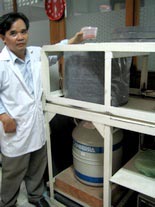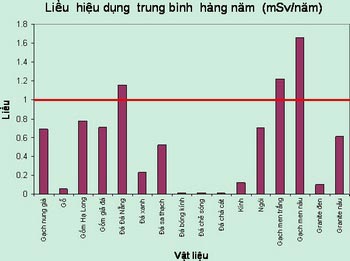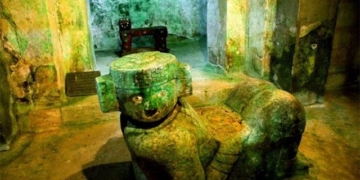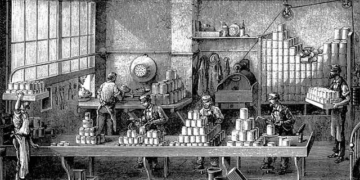Recently, a survey conducted at the Ho Chi Minh City Nuclear Center confirmed that certain types of ceramic tiles have radiation levels exceeding permissible limits.
 |
|
Conducting radiation measurements at Ho Chi Minh City Nuclear Center. In the photo: The ceramic tile sample is crushed and placed in a container for radiation measurement. |
Dr. Tran Van Luyen and his colleagues at the Ho Chi Minh City Nuclear Center conducted measurements of the radiation levels of 20 types of building materials such as cement, bricks, and tiles available in the Ho Chi Minh City market.
These building materials are commonly found and were randomly collected from various hardware stores for sampling.
The measurement results indicated that building materials like Da Nang bricks, white ceramic tiles, brown ceramic tiles, and brown granite had higher than normal radiation levels.
When calculated, the average annual effective dose from some building materials such as brown ceramic tiles, Da Nang stones, white ceramic tiles, stone-look ceramics, and Ha Long ceramics is higher than the global average. Specifically, Da Nang bricks have a radiation level of 1.16 mSv/year; white ceramic tiles: 1.22 mSv/year; brown ceramic tiles: 1.66 mSv/year; brown granite: 0.61 mSv/year. Meanwhile, the limit value according to global regulations is 1 mSv/year.
“Effective dose” can be loosely understood as the level of radiation exposure to biological tissue. To put this into perspective, a single X-ray exposure typically delivers a dose of between 0.2 to 5 mSv.
 |
|
The diagram shows that some building materials like Da Nang stone, white ceramic tiles, and brown ceramic tiles exceed the effective dose limit (red line) of 1 mSv/year. |
According to Dr. Tran Van Luyen, in our country, there are currently no specific regulations regarding the use of materials for construction and decoration. It all depends on the financial capacity and preferences of the users.
As a result, some materials with relatively high radiation levels are still widely used.
The reason these building materials are radioactive is that the raw materials are naturally occurring and carry radiation. This unintentional factor poses serious health risks to humans.
Continuing with Dr. Tran Van Luyen, to mitigate the harmful effects of radiation in building materials, proper ventilation in homes is crucial.
Living spaces should be constructed with good airflow, featuring windows or ventilation systems to ensure air exchange with the outside environment. In rooms that use air conditioning, additional ventilation fans should be implemented to prevent the air from becoming stagnant, which could lead to concentrated radiation in a particular area of the room.
Nong Khac Yi


















































